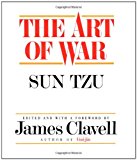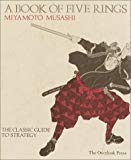Alexander the Great
Alexander the Great was a military genius with a little bit of luck. He defeated the Persians, Greeks, and countless other small villages. He spread Greek and Hellenistic culture throughout the world which helped spread and advance the Greeks ideas and inventions. The Battle of Issus was a turning point in his campaign. He proved he could defeat the Persians and killed thousands of Persians while losing less than one hundred of his own men. Alexander used his military genius to outsmart and beat the Persians in the battle of Issus.
The heart of Alexanders infantry was the infantry or phalanx. They called the heavily armored infantry hoplites. The hoplites used fifteen foot spears, called a sarissa, a large wooden shield plated with brass or copper, which was big enough to cover his whole body when he kneeled behind it. They held the sarissa ten feet out, as to provide a wall of protection for the ranks. The hoplite had a breastplate, helmet, and greaves for armor. Due to constant training they were very maneuverable and could run hundreds of yards with their very heavy equipment. (Dupuy 14)
The major part of the infantry was the hypaspist. He was like a hoplite but only a nine- foot spear and less armor. Alexander used them for their superb speed and agility. The hypaspist was better, trained, motivated, and maneuverable then the hoplite so Alexander put them in to battle more. The hypaspist blended well with the rest of the Macedonian army, which was fast and agile. They also carried a short sword by their belt for close quarter’s combat and smaller shields then a hoplite. (Dupuy 16)
Ranged attacks were a big party of the army. For every four infantries there were two peltasts and one psiloi. The peltasts would fire arrows and other missiles into the enemy at the beginning of the battle to confuse and injure them. The peltasts usually threw javelins, and after they had thrown theirs would use a sword for combat. The psiloi, or archers, would go to the front lines and fire their bows, then run back to safety behind the hoplites. The psiloi was usually light armored or wore no armor at all. (Dupuy 17)
Cavalry was used much more than any army ever before. The nobles of Macedonia and the horses and horsemen of Thessaly, a part of Greece, were the cavalry. They used 10 foot pikes, which they threw or used in melee combat. They also had short swords on their belt. There were light horsemen too, like psiloi, they fired bows on horseback, they were often used for reconnaissance. The cavalry was extremely skilled, since they rode bareback because they did not invent the saddle yet.
In 333 B.C. Alexander and his army marched out of Hellespont, Greece, since he was sure that his lines of communication and that his empire behind him was safe. He marched toward Turkey and western Asia. At Ancrya, the capital of Turkey, ambassadors from paphlagonia pledged allegiance. Paphlagonia was a small kingdom in upper Turkey near the black sea. He continued his conquest and by late summer he had control of Nyssa and the west bank of the Halys river, in the middle eastern part of Turkey. (Dupuy 56)
Darius, the emperor of Persia, received word that Alexander was marching toward Persian land. He set out to protect his land and defeat Alexander with his army. Darius set out from Asia Minor hoping to meet Alexander around the Gulf of Issus and the Amanus Mts. in western Turkey. Darius had a lot of confidence in his army, since the Persian empire was large and powerful.
To get from Turkey to the Middle East and Asia, Alexander had to go through the Cillician gates in the Taurus mountains. The Cillician gates are easily defendable passes, but Alexander marched through there with so much confidence that Arsames and his small Persian army ran away. Alexander then went on to capture the city of Tarsus near the mountains. It was now the end of September and he had captured most of Turkey and was moving to the Middle East. (Dupuy 57)
In mid-October Alexander arrived in Syria. He prepared to turn east when he received news that Darius had moved out of Sochi (just east of him), and that he had moved north to just above the Gulf of Issus. Darius was now behind Alexander and could control his lines of communication and supplies. This was one of a few strategic surprises in Alexanders life, but due to his great reconnaissance he learned about it a few hours after Darius had arrived behind him. He sent men in a thirty oared boat to confirm the reports and they were true. This was surprising but tactically better, since the Macedonian path to Darius was narrow so the Persians could not surprise them with attacks from the back or side.
On October 31, 333 B.C. Alexander set out to meet Darius and protect his lines of communication. Darius had stayed there for 36 hours, showing his choice for the battle here was deliberate. By 2:00 p.m. the next day they were in battle formation and in sight of Darius at the river Pinarus. Alexander lined up with light infantry and cavalry to the left, his heavily armed phalanx in the middle, and a few light infantry, archers, and cavalry covering the right, where there was a small scouting army of Darius’s. The control of his army was split in half, Alexander took the right half, and Parmenion took the left half. Alexander split up command of such huge battles, since no one could command everything in the heat of such battles.
Darius sent some troops to the south bank of the river Pinarus to protect his main body of troops on the high ground north of the river. Darius took the position with three thousand elite bodyguards in the center, to his left and right were 10,000 Greek mercenaries, on the outsides of the mercenaries were about 10,000 cardaces, the best infantry the Persians had. Some cardaces had bows and javelins, and all of them were experts with swords. The soldiers on Darius’s right were on a small sickle-shaped hill. Darius planned for the Macedonian phalanx to be the center of the army and the attack, which backfired. Behind Darius’s front line were 20,000 troops of mediocre skill. To the far right of Darius, were the Pinarus flowed into the Sea were the cavalry, led by Nabarzanes. They were 10,000 light horsemen with 5,000 light infantry protecting them. When all this was done Darius pulled back his troops across the river to form one solid front line. (Dupuy 61) (See Picture on the 2nd to last page)
Alexander made some changes right before the battle, since he could finally see the entire army. He moved the Thessian cavalry from the right wing to the left wing, but made them ride behind the phalanx so Darius would not see them moving. To fill this gap he moved the companion cavalry units to the right along with some archers and agrarians (soldiers from an allied country). He did this so he would not be out attacked by the longer Persian and to make a stronger left wing of Alexanders.
Since the Persians had put a small scouting troop on a hill about 500 yards from the main force, Alexander attacked them first, dispersing them in half an hour by using a sharp and quick attack with many agrarians, archers, and cavalrymen. It was now three to 3:30. Alexander advanced slowly, shouting cheers of encouragement and calling out his bravest soldiers. He checked out the Persian army slowly. The Persians were lined up 1,500 men with a depth of eight. He came with a bowshot of the Persians, along the river bank, and then the Macedonian war bugles blared. Alexander and the companion cavalry charged off to the left border of Darius, while the rest of the army charged forward. Everyone but the cavalry charged across the Pinarus River, which is low enough to wade across. With plan Alexander and his whole army moved forward and right. (Dupuy 63)
Alexander and his hypaspist and companions quickly crushed Persian archers and cardaces on Darius’s left. Parmenions side had a tougher time. His phalanxes could not cross the river because of heavy resistance from Greek mercenaries. The Macedonian cavalry was fighting the Persians at the mouth of the Pinarus. The center phalanx kept charging up the river, but was pushed back by Persians who could not let them establish on dry land. The Macedonian phalanx would not give up though, they regrouped and put up a solid defense of shields which the mercenaries could not break. This gave Alexander time to attack the left of the occupied mercenaries, since Alexander had crushed the left side of Darius’s army and was moving to the middle. The mercenaries quickly fell from being attacked from the center and left. (Dupuy 64)
Alexander’s army headed straight to Darius after beating the mercenaries. Seeing his left wing collapsing and his right wing gone Darius ran off in his chariot. The left wing was still fighting furiously though. They vastly outnumbered them but due to the narrowness of it not many could fight at a time, which was a mistake by Darius. The cavalry on that side was in a tie with the heavy Persian cavalry. The Macedonian cavalry soon counterattacked the cavalry of Narbanzes, the Persian leader of cavalry. Narbanzes then heard of Darius running and seeing his troops fighting decided for him and his troops to retreat. The rest of the Persian army soon followed, which included the last of the Persian guard and the Greek mercenaries. Alexander chased them for a few miles but gave up since it was dark and he did not want to be ambushed.
Alexander held a funeral for the dead, and praised individual deeds that were seen. He gave generous sums of money to the families of the dead. Notable Persians were honored too. He gave thanks to the gods, erecting altars on the bank of the Pinarus to Zeus, Heracles, and Athena, which he prayed at. They celebrated by making cold coins with the head of Athena on the face and the reverse was a winged victory. Alexander also named a town Alexandria ad Issum, named for the Gulf of Issus, where previously Alexandretta had been. (Hammond 109)
There are no reliable records, but the Persians lost around 5,000 Greek mercenaries, 2,000 cavalry, and 10,000 infantry whom they mostly killed on the run from the battle. The Macedonians had about 450 men killed and around 4,000 wounded including Alexander himself slightly. Alexander captured the Persian camp, which had Darius” mother, wife, and two daughters. He also found 30,000 gold talents, about 90 million dollars. (Dupuy 66) The news of Alexanders strong victory helped calm Greek states who wanted to negotiate a treaty and leave Alexanders rule.
One of Darius’s mistakes was the narrowness of the land he chose. If he had used all his 36,000 Greek mercenaries, he would have a front of 3.75 kilometers, instead they were concentrated in half a kilometer. It was said by a royal scribe “God put it into the mind of Darius to bring his own forces, from wider ground into a narrow space, where the great numbers of the Persians were useless but the distance was the right deployment for the Macedonians.”(Hammond 107) He did not spread out his forces to give them manoeuverability either.
The right wing had more cavalry then they could use, while his left was extremely short of the troops they needed. The left wing was the side Alexander attacked and led to the retreat of Darius, if he had spread out the troops evenly he would have won. He put much to man men in the center, to give himself a large sense of security, since he was in the center. A scribe also wrote “Some freak of chance led Darius to the very place where he did not derive any great advantage from his cavalry or from his great number of men, missiles and arrows.”(Hammond 109)
Alexander pre-thought every move and plan, which is to have success on the right side, and hold the left. Splitting up the command helped Alexanders army make quick decisions and help the left wing hold together under sever pressure. Alexander also fought side by side with his army. He had the fearlessness of a born fighter and knew his officers with a close intimacy. The Macedonians had high morale and expectations. A scribe wrote “It was conspicuous success of Alexander in action which made the Macedonians determined not to fall behind him and not to dim the glorious record of the phalanx, famed as invincible up to this day.”(Hammond 108)
The defeat of the Persians at Issus was a highpoint of Alexanders military career. He beat the extremely powerful Persians and he lost very few men doing it. It showed the Greek states that wanted to rebel that Alexander was around and still powerful. The victory at Issus opened up a gateway to the Middle East and Asia and left the Persians scared of Alexander. With the Persians and Darius defeated Alexander could conquer more lands and he severely brought down Persian morale.
Alexander the Great,



